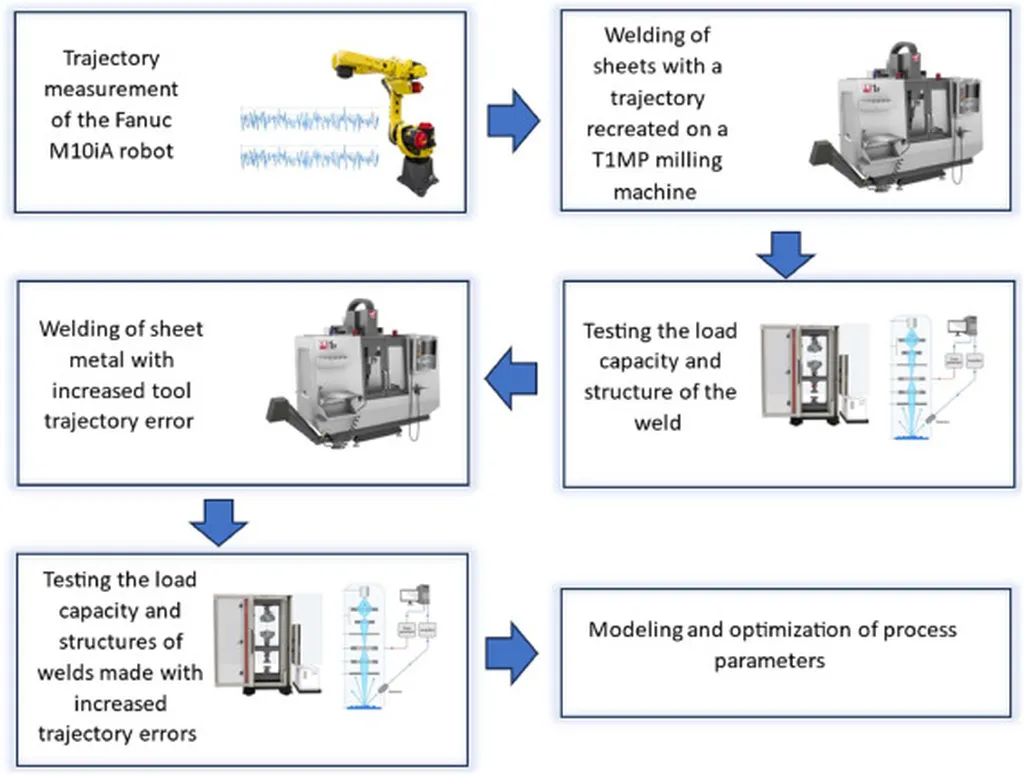In the world of advanced manufacturing, precision is paramount. A recent study led by Magdalena Bucior from the Department of Manufacturing and Production Engineering at Rzeszow University of Technology has shed new light on the impact of tool trajectory errors in friction stir welding (FSW), a crucial process for joining aluminum alloys. The research, published in the Journal of Advanced Joining Processes (known in English as the Journal of Advanced Joining Processes), offers valuable insights for industries relying on high-quality welds, including the energy sector.
Friction stir welding is widely used for its ability to create strong, high-quality joints in materials like the EN AW-2024-T3 aluminum alloy. However, the process is not without its challenges. Robotic systems, which are often employed for their precision, can still experience deviations from the ideal tool trajectory. These deviations, though small, can have significant impacts on the load capacity and overall integrity of the weld.
Bucior and her team set out to understand these impacts more thoroughly. “We wanted to assess how these trajectory deviations affect the material flow and load capacity of the joints,” Bucior explained. To do this, they used a HAAS TM1P milling machine to simulate the robotic motion, incorporating recorded deviation errors. The team first established optimal welding parameters under ideal conditions: a feed rate of 200 mm/min, a tool rotational speed of 1517 rpm, and a plunge depth of 1.46 mm.
The results were enlightening. Trajectory deviations with a standard deviation of up to 0.1 mm did not significantly affect the load capacity, with increases ranging from just 1.01% to 1.95%. However, these deviations did increase the dispersion in mechanical performance. When the errors exceeded 0.15 mm, the team observed material folding and microcracks, which compromised the weld’s integrity.
The study also demonstrated that it is possible to compensate for these trajectory deviations by adjusting the welding parameters. Specifically, reducing the feed rate to increase heat accumulation can mitigate the negative effects. “By optimizing the welding parameters, we can achieve a load capacity that is only 1.55% lower than that of an ideal trajectory weld,” Bucior noted. This finding is particularly relevant for industries where precision and reliability are paramount, such as the energy sector.
The research suggests that future developments in FSW technology could focus on real-time adjustment of welding parameters to compensate for trajectory errors. This could involve advanced control systems that monitor and adjust the feed rate and rotational speed in response to detected deviations. Additionally, the use of more flexible and precise robotic systems could further minimize these errors, enhancing the overall quality of the welds.
For the energy sector, where the integrity of welded components is critical, this research offers a pathway to more reliable and efficient manufacturing processes. By understanding and compensating for trajectory errors, companies can ensure the production of high-quality joints, reducing the risk of failures and improving the overall performance of their systems.
As the field of advanced manufacturing continues to evolve, studies like this one will play a crucial role in shaping the future of welding technologies. By providing a deeper understanding of the factors that influence weld quality, researchers can help industries achieve greater precision and reliability in their manufacturing processes. The work of Magdalena Bucior and her team is a testament to the power of scientific inquiry in driving technological advancement.

